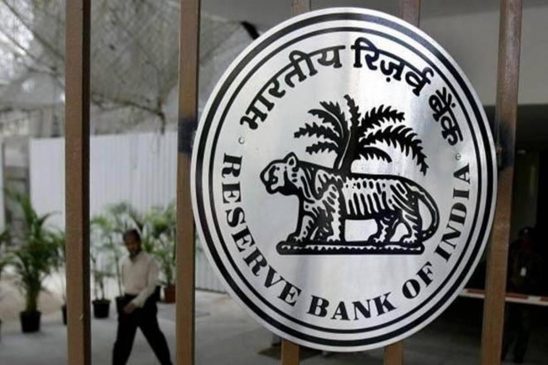This was the sixth and last bi-monthly MPC meeting of FY22, and tenth time in a row when RBI kept the key rates unchanged.
The Reserve Bank of India’s (RBI) Monetary Policy Committee (MPC) kept the key benchmark rates unchanged during bi-monthly February policy and maintained an accommodative stance. The repo rate is kept unchanged at 4 per cent and reverse repo rate at 3.35 per cent on Thursday.
All members of the MPC — Shashanka Bhide, Ashima Goyal, Jayanth R Varma, Mridul K Saggar, Michael Debabrata Patra, along with RBI Governor Das unanimously voted for keeping the policy repo rate unchanged. This was the sixth and last bi-monthly MPC meeting of FY22, and tenth time in a row when RBI kept the key rates unchanged.
Here’re the key takeaways from the policy outcome announced by RBI Governor Shaktikanta Das
Repo, reverse repo rates: The RBI MPC decided to keep the repo rate unchanged at 4 per cent to revive and sustain growth on a durable basis and continue to mitigate the impact of COVID-19 on the economy. The reverse repo rate remained changed at 3.35 per cent and the marginal standing facility (MSF) rate and the bank rate at 4.25 per cent.
Growth Projection: High-frequency indicators suggest some weakening of demand in January 2022. Taking all these factors into consideration, the projection for real GDP growth is revised at 9.2 per cent in FY22, surpassing its pre-pandemic level. Forecasts Q1FY23 GDP growth at 17.2 per cent; Q2 at 7 per cent; Q3 at 4.3 per cent and Q4 at 4.5 per cent of FY23. Sees FY23 GDP at 7.8 per cent.
Inflation: Headline CPI inflation edged up to 5.6 per cent year-on-year in December from 4.9 per cent in November due to large adverse base effects, says RBI. Taking into consideration all these factors, CPI inflation is projected at 4.5 per cent for FY23: 4.9 per cent in Q1, 5 per cent in Q2; 4 per cent in Q3 and 4.2 per cent in Q4 of fiscal 2022-23, with risks broadly balanced.
Liquidity: Overall system liquidity continued to be in large surplus, although average absorption under the LAF declined from Rs 8.6 lakh crore during October-November 2021 to Rs 7.6 lakh crore in January 2022. Reserve money expanded by 8.4 per cent YoY. Bank credit by commercial banks rose YoY by 8.2 per cent. India’s forex reserves jumped by US$ 55 billion in 2021-22 to US$ 632 billion.
VRR Auctions: Given the positive response to the VRR (Voluntary Retention Route) as evident from the near exhaustion of the current limit, it is proposed to increase the investment limit under VRR by Rs 1,00,000 crore to Rs 2,50,000 crore with effect from April 1, 2022.
The VRR for investment in government and corporate debt securities by FPIs was launched on March 01, 2019, with a view to facilitating stable investments in debt instruments issued in the country.
Read more:Paytm Is Offering Chance to Get Free LPG Cylinder: Here’s How You Can Get It
Overnight Indexed Swap (OIS): With a view to providing a further fillip to the interest rate derivative market in the country, removing the segmentation between onshore and offshore markets and improving the efficiency of price discovery, it has been decided to allow banks in India to undertake transactions in the offshore Foreign Currency Settled Overnight Indexed Swap (FCS-OIS) market with non-residents and other market makers.
e-RUPI Cap Enhancement: To facilitate digital delivery of various government schemes to the beneficiaries, it is proposed to increase the cap on amount for e-RUPI vouchers issued by Governments to ₹1,00,000/- per voucher and allow use of the e-RUPI voucher multiple times.
The e-RUPI prepaid digital voucher, developed by the National Payments Corporation of India (NPCI) and launched in August 2021, is a person-specific and purpose-specific cashless voucher and can be used by individuals, corporates or governments.
Increasing NACH Mandate Limit: Keeping in view the growing liquidity requirements of the MSMEs and the requests received from the TReDS (Trade Receivables Discounting System) platforms, it is proposed to increase the NACH mandate limit to Rs 3 crore from Rs 1 crore earlier. for settlements.
Read more:Check last due dates for filing GSTR returns under various categories – details here!
Master Direction on IT Outsourcing: RBI felt that aspects of risk management framework for IT outsourcing, managing concentration risk, periodic risk assessment and outsourcing to foreign service providers require suitable regulatory guidelines. And, hence guidelines relating to Information Security Governance and Controls, Business Continuity Management and Information Systems Audit also require to be updated and consolidated.
Credit Default Swaps (CDS) Guidelines Review: Given the importance of the CDS market for the development of a liquid market for corporate bonds, especially for the bonds of lower rated issuers, it was announced in the Statement on Developmental and Regulatory Policies of Dec 4, 2020 that these guidelines would be reviewed. Accordingly, draft guidelines were issued on Feb 16, 2021 for public consultation. Considering the feedback received, the final Directions are being issued today.





































